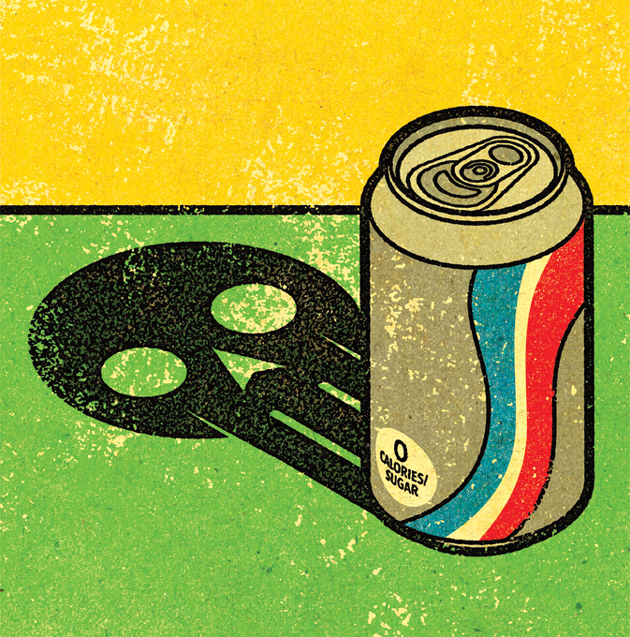
Pepsi Is Ditching One Fake Sweetener, but What about the Rest?
Junk-food giant PepsiCo is preparing to make the biggest change to its Diet Pepsi brand in three decades, Bloomberg News reports: it's nixing the controversial low-calorie sweetener aspartame. In its place, Diet Pepsi will get its sweet jolt from a mix of sucralose and acesulfame potassium. The apparent reason for the shake-up: Diet Pepsi sales plunged 5.2 percent last year, Bloomberg noted. Rival Diet Coke fared even worse, enduring 6.6 percent drop in sales (though Coke is clinging fast to aspartame). What gives?
April 27, 2015 | Source: Mother Jones | by Tom Philpott
Junk-food giant PepsiCo is preparing to make the biggest change to its Diet Pepsi brand in three decades, Bloomberg News reports: it’s nixing the controversial low-calorie sweetener aspartame. In its place, Diet Pepsi will get its sweet jolt from a mix of sucralose and acesulfame potassium. The apparent reason for the shake-up: Diet Pepsi sales plunged 5.2 percent last year, Bloomberg noted. Rival Diet Coke fared even worse, enduring 6.6 percent drop in sales (though Coke is clinging fast to aspartame). What gives?
Even with the recent consumer turn away from these once-formidable products, the lure of sweet-but-virtuous soda is still going strong—and goes back decades. Recently, I came across one from a 1966 glossy magazine featuring a close-up shot of a supple-lipped woman filling a glass with Tab, Coca-Cola’s original diet soda. “One crazy calorie in every six ounces,” the copy purrs, with a Don Draper-ish flourish: “Like everything now, a little crazy, but wow.”
Today, diet drinks make up 27.5 percent of the $76.3 billion US soft-drink market, according to Beverage Digest. And artificial sweeteners don’t just work their magic on sodas. They also appear in stuff like Minute Maid Light Orange Juice, Quaker “25% less sugar” granola bars, and Thomas’ 100% Whole Wheat English Muffins. A 2012 study by Emory University researchers found that nearly a quarter of adults and 12.5 percent of children regularly consumed artificially sweetened beverages. Globally, the market for low-calorie foods and drinks will hit $10.4 billion by 2019, up from today’s $7.4 billion, predicts the firm Transparency Market Research. Prominent medical groups approve: The American Diabetes Association, for example, recommends diet soda as an alternative to the real stuff.
Yet a slew of studies have shown that faux sugars may actually contribute to the very diet-related maladies they’re marketed to protect us from—type 2 diabetes, hypertension, metabolic syndrome, strokes, and heart attacks. In a 2012 paper, University of Miami researchers analyzed data from the Northern Manhattan Study—which has tracked consumption habits and health metrics of thousands of people since 1990—and found those who drank at least one diet soda per day were 43 percent more likely to suffer strokes and heart attacks than people who drank none, even after controlling for such factors as weight, level of exercise, diabetes, high blood pressure, and intake of calories, cholesterol, and sodium. Another large population study, published in 2009, found that daily diet soda drinkers were 67 percent more likely to develop type 2 diabetes than people who shun them—again, even after adjusting for lifestyle and demographic factors. (“Natural” calorie-free sweeteners such as stevia and xylitol have barely been studied.)
Purdue University behavioral neuroscientist Susan Swithers suggests that fake sweeteners do their dirty work by confusing our digestive systems’ Pavlovian response to sugar. When you smell food, she explains, you begin to salivate and your stomach begins to grumble; that’s your body preparing for what it assumes from experience is a hearty meal to come. Similarly, she says, a sweet taste is a “pretty good indication that sugar is going to arrive in your body”—that is, a blast of easily digestible calories. So, quaff Pepsi, and your body starts releasing digestive hormones and increases its metabolic rate, “because you have to expend energy to get energy out of your food,” she explains.
